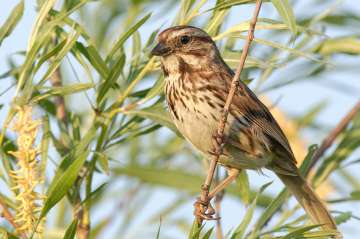Washington: Bird living in suburban areas are far angrier than their rural counterparts, a new study suggested.
According to researchers at Virginia Tech and Radford University in the US, this new study shows how birds based in urban areas have less space, but better resources to defend their territory and are therefore more hostile.
The study was recently published in the journal Biology Letters.
"A possible reason for this is that these birds have less space but better resources to defend," said Scott Davies, a postdoctoral associate at Virginia Tech.
"Living near humans provides better food and shelter, but it also means more competition for these limited resources," he said.
Researchers measured territorial aggression in 35 urban and 38 rural male song sparrows at three rural and three urban sites in the US last year.
While the study was going on, the researchers played a recording of a male song sparrow and observed how the territory-holding birds responded to a simulated intrusion from a neighbour.
Campus birds showed a higher level of aggression: they approached and remained near the speaker, flapped their wings furiously, engaged in loud singing and then began to produce 'soft song' - a term that researchers use to describe the quiet, garbled noise that a bird makes, which is predictive of an impending attack.
Though rural birds still responded to a song intrusion, they did not respond as vigorously.
The researchers placed small leg bands on the birds to identify individuals, and recorded each individual's responses twice, several weeks apart.
The suburban birds were more territorial on both occasions, showing that their increased aggression persists throughout a breeding season.
The researchers' observations shed light on the effects of human population expansion on wildlife.
Though many animals avoid habitats that are impacted by humans, some species can adjust and live in suburban and even urban habitats.
"Predicting the impact that human population growth will have on wildlife requires studying the species that adjust and persist in human impacted habitats," said Kendra Sewall, an assistant professor at Virginia Tech.
"Suburban sprawl is a primary form of human habitat change and though many species can survive in our backyards, their behaviour and physiology may change to cope with shifts in resources and with new disturbances," Sewall said.
(With Agency input)
Latest World News
